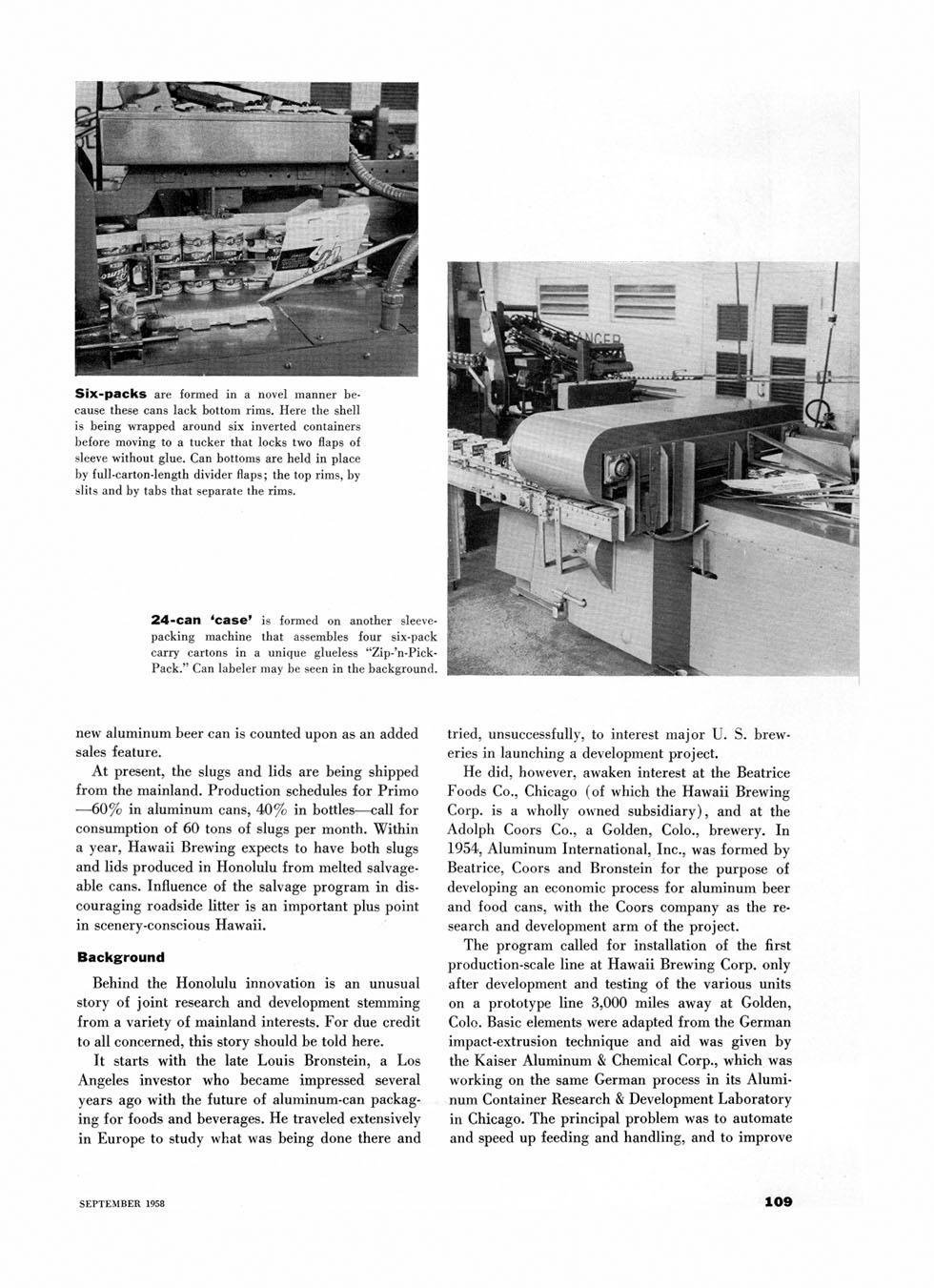


Six-packs are formed in a novel manner because these cans lack bottom rims. Here the shell is being wrapped around six inverted containers before moving to a tucker that locks two flaps of sleeve without glue. Can bottoms are held in place by full-carton-length divider flaps; the top rims, by slits and by tabs that separate the rims.
24-can ^case* is formed on another sleevepacking machine that assembles four six-pack carry cartons in a unique glueless "Zip-'n-Pick-Pack."¯ Can labeler may be seen in the background.
new aluminum beer can is counted upon as an added sales feature.
At present, the slugs and lids are being shipped from the mainland. Production schedules for Primo 60% in aluminum cans, 40% in bottle-”call for consumption of 60 tons of slugs per month. Within a year, Hawaii Brewing expects to have both slugs and lids produced in Honolulu from melted salvageable cans. Influence of the salvage program in discouraging roadside litter is an important plus point in scenery-conscious Hawaii.
Background
Behind the Honolulu innovation is an unusual story of joint research and development stemming from a variety of mainland interests. For due credit to all concerned, this story should be told here.
It starts with the late Louis Bronstein, a Los Angeles investor who became impressed several years ago with the future of aluminum-can packaging for foods and beverages. He traveled extensively in Europe to study what was being done there and
tried, unsuccessfully, to interest major U. S. breweries in launching a development project.
He did, however, awaken interest at the Beatrice Foods Co., Chicago (of which the Hawaii Brewing Corp. is a wholly owned subsidiary), and at the Adolph Coors Co., a Golden, Colo., brewery. In 1954, Aluminum International, Inc., was formed by Beatrice, Coors and Bronstein for the purpose of developing an economic process for aluminum beer and food cans, with the Coors company as the research and development arm of the project.
The program called for installation of the first production-scale line at Hawaii Brewing Corp. only after development and testing of the various units on a prototype line 3,000 miles away at Golden, Colo. Basic elements were adapted from the German impact-extrusion technique and aid was given by the Kaiser Aluminum & Chemical Corp., which was working on the same German process in its Aluminum Container Research & Development Laboratory in Chicago. The principal problem was to automate and speed up feeding and handling, and to improve